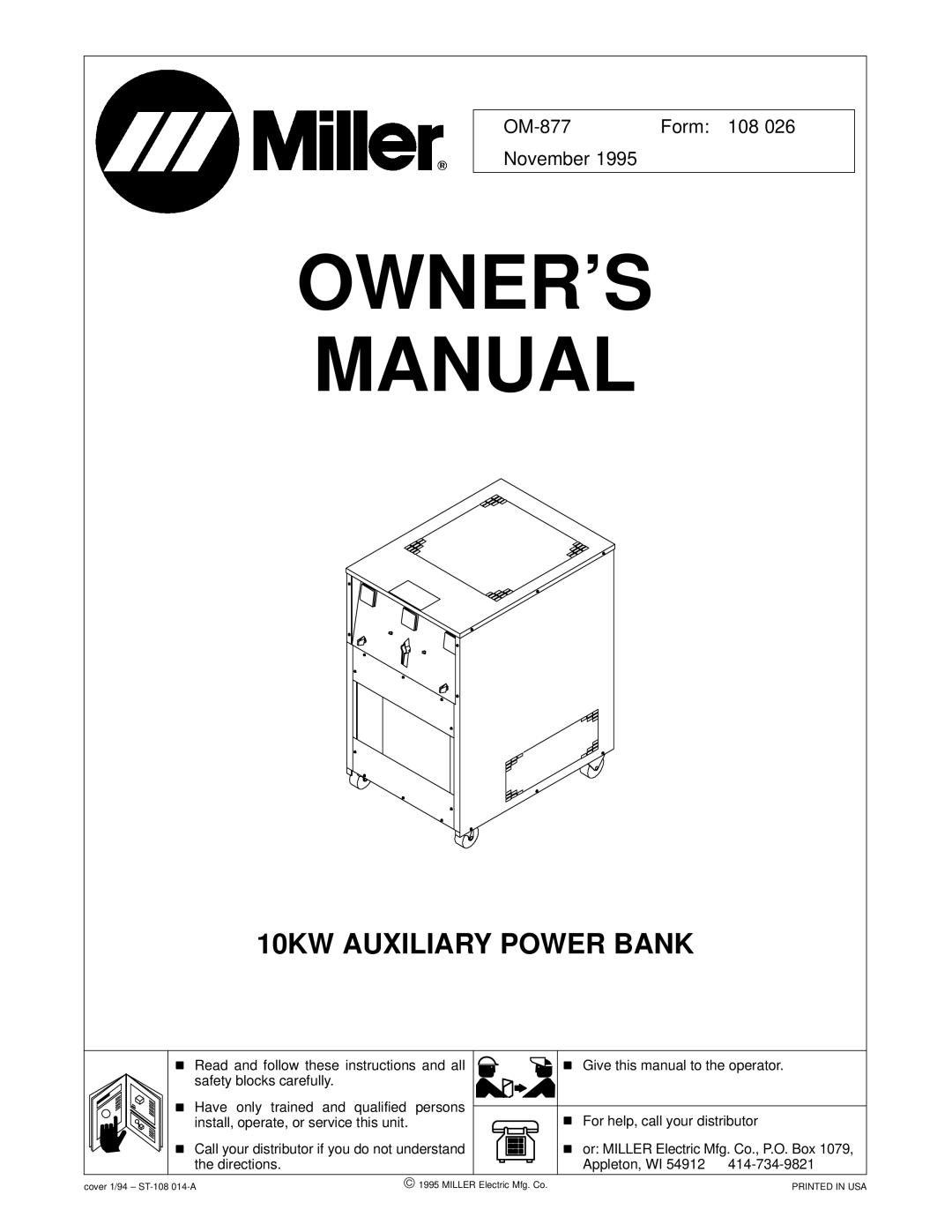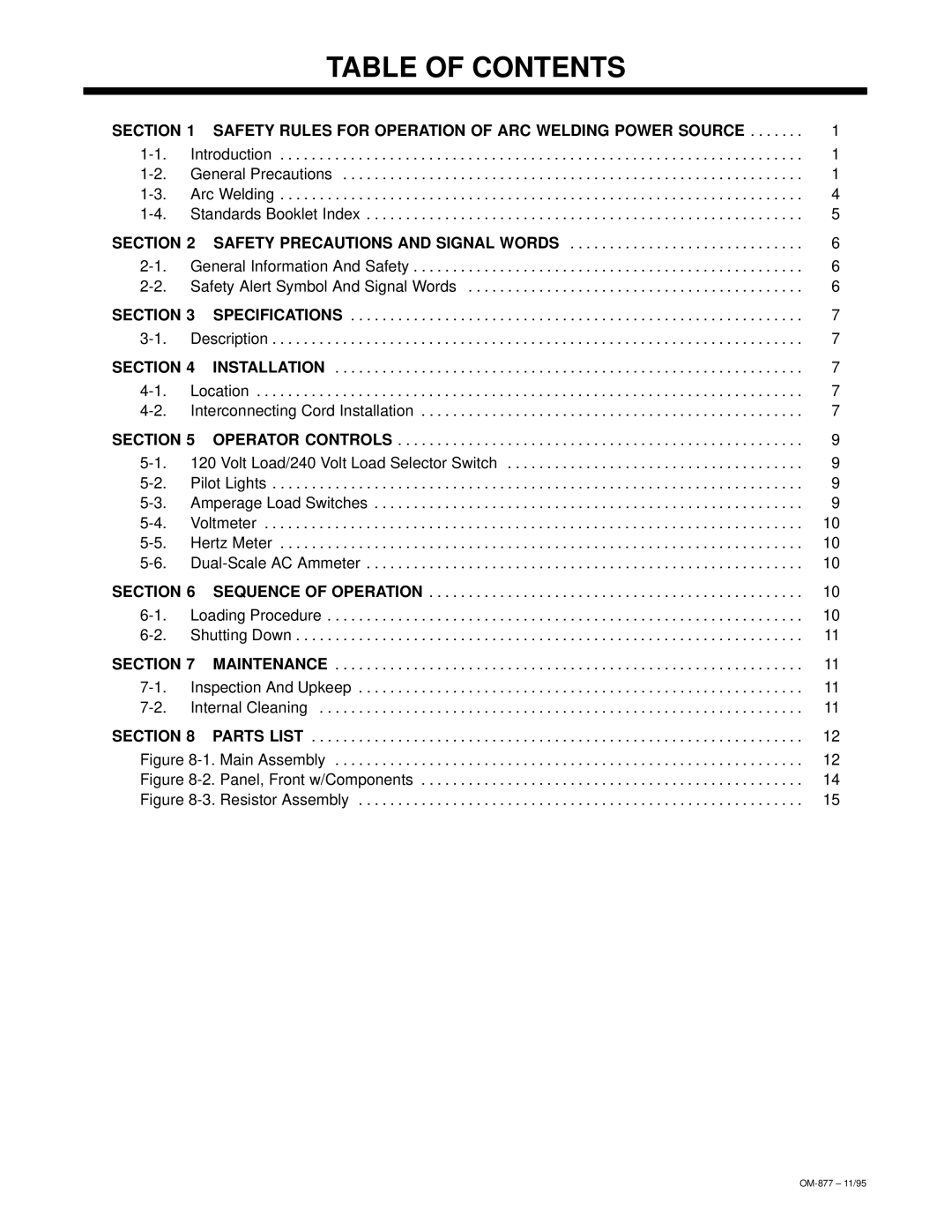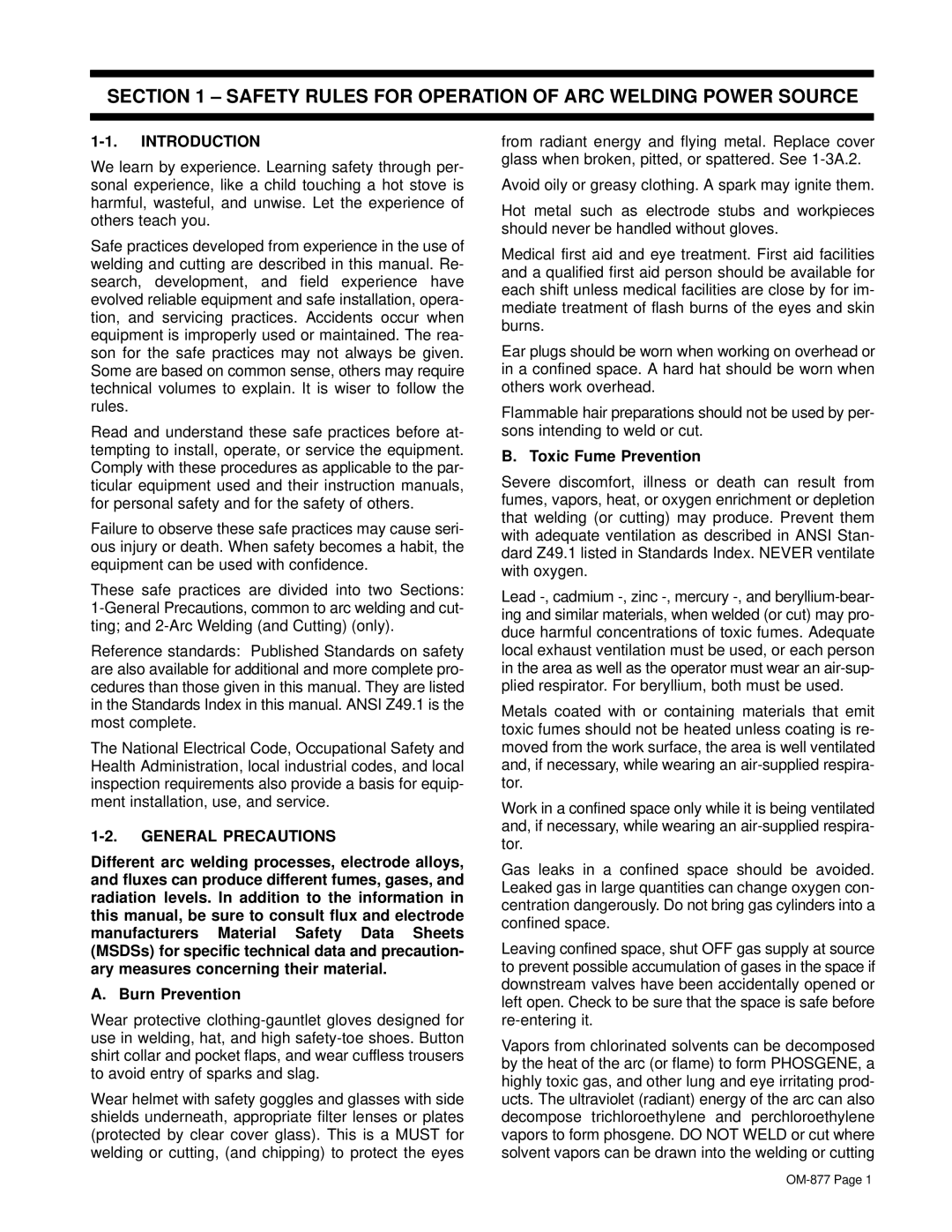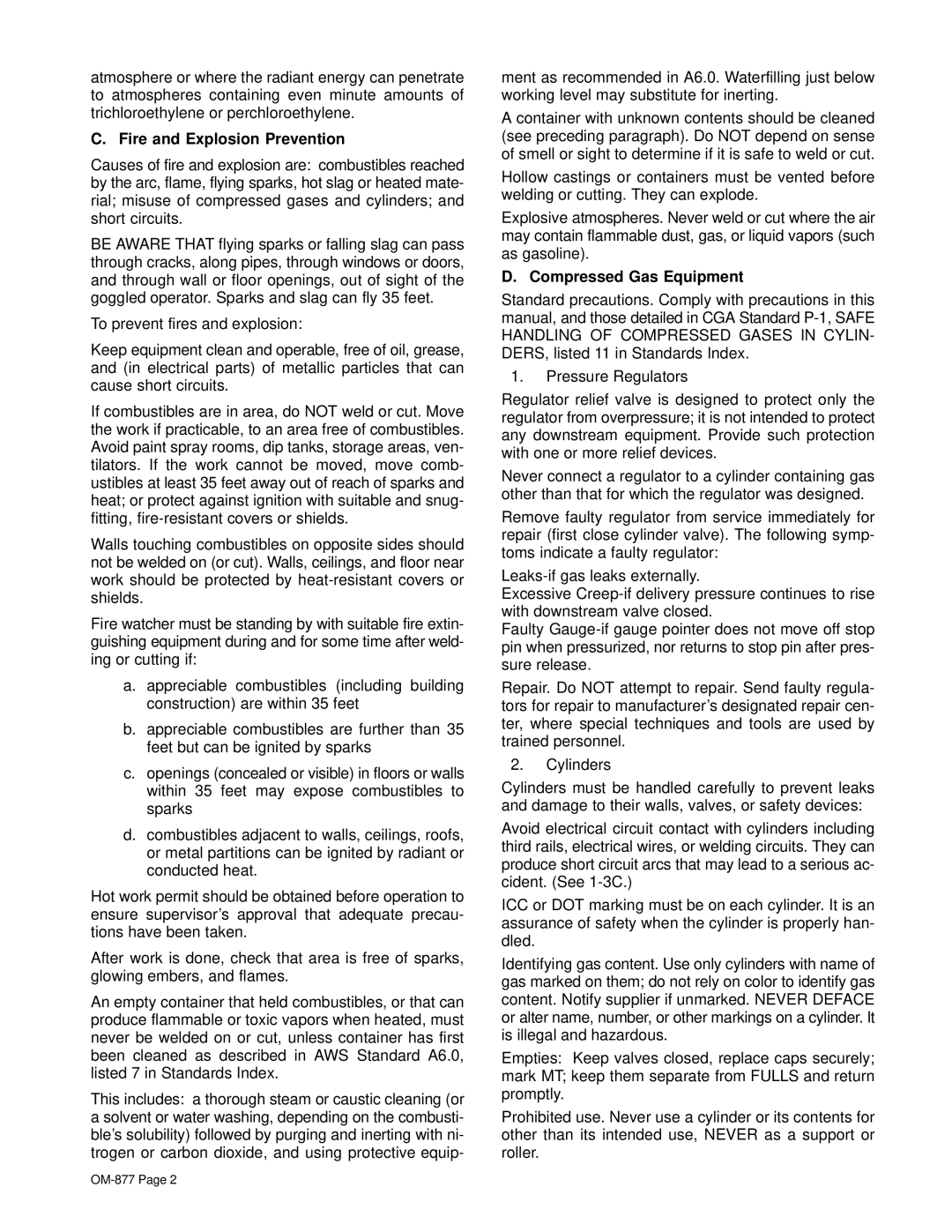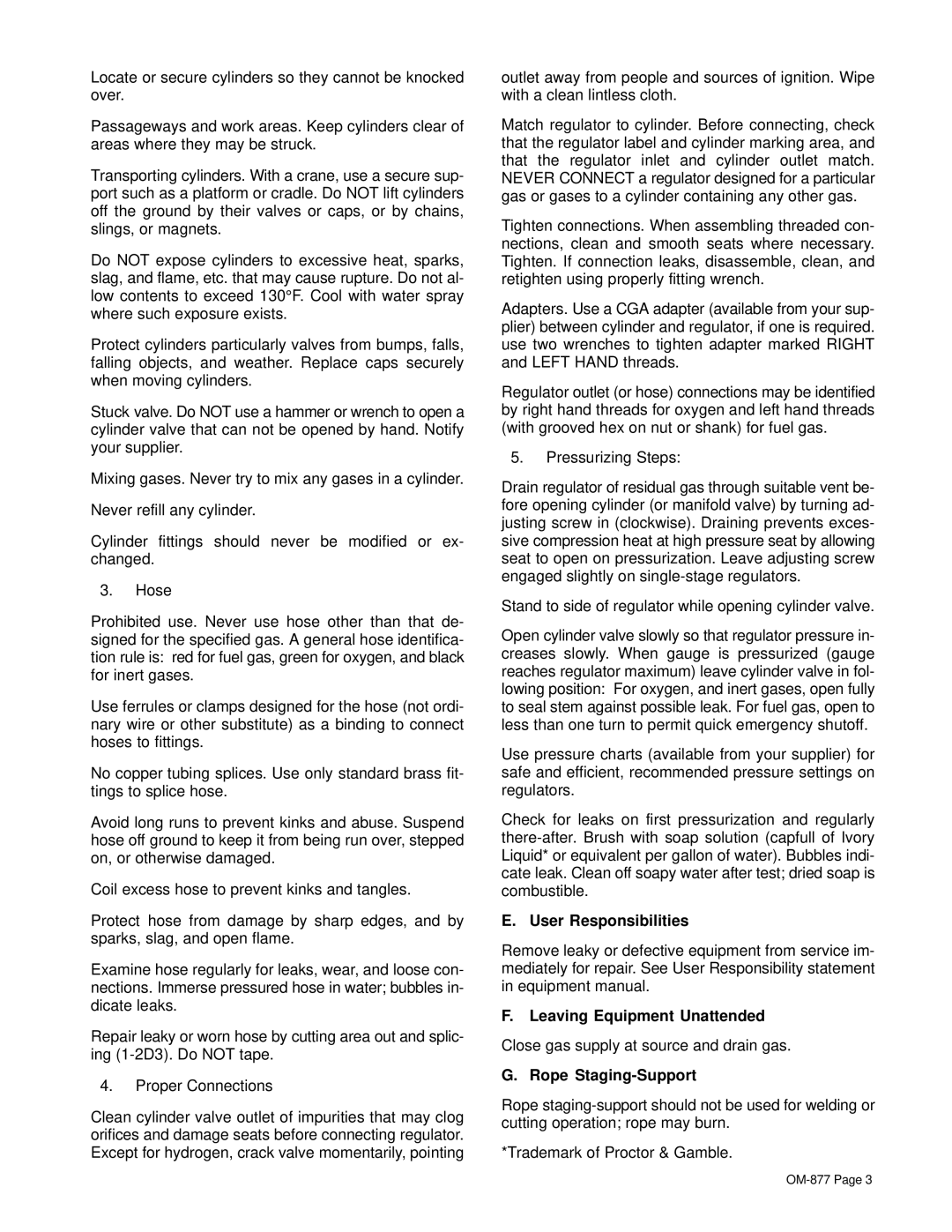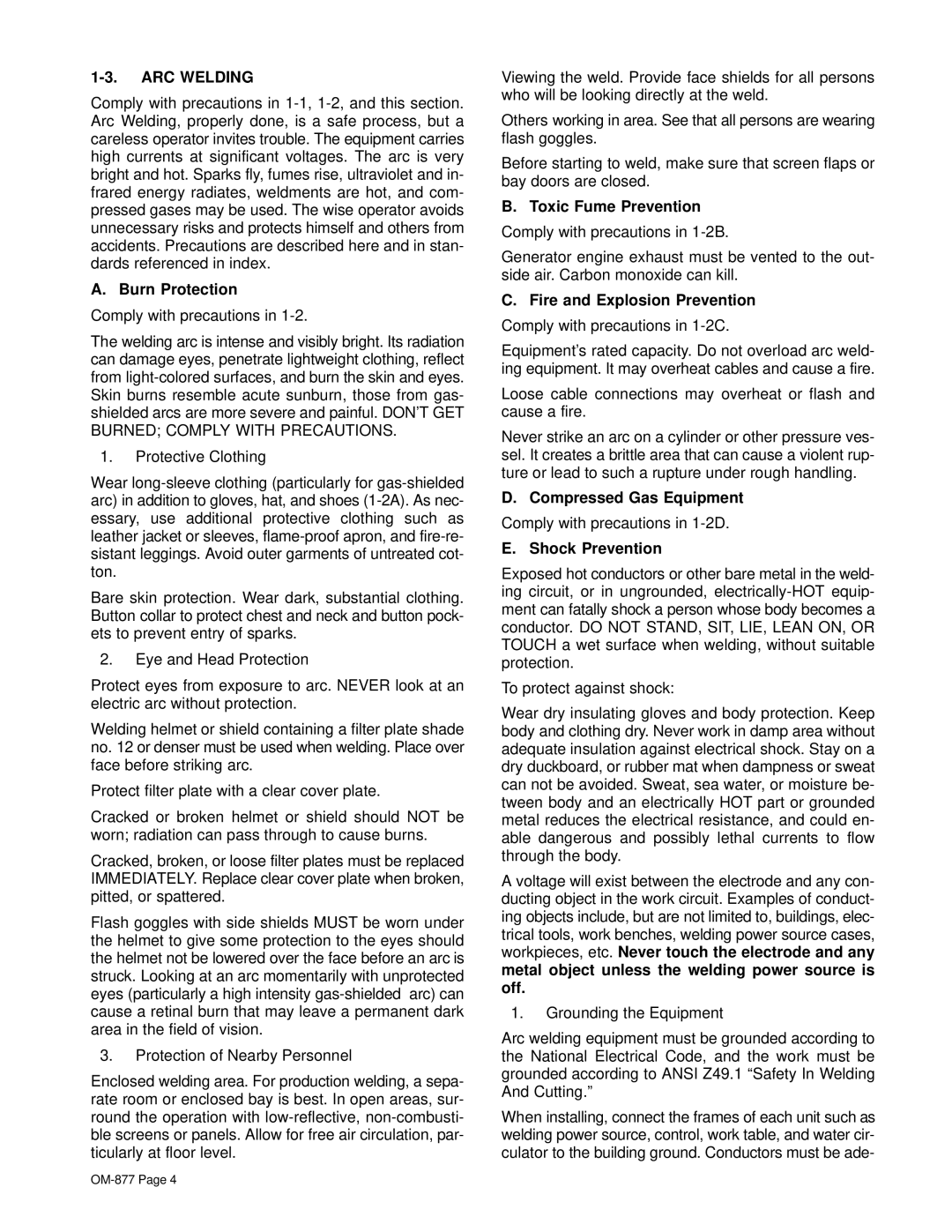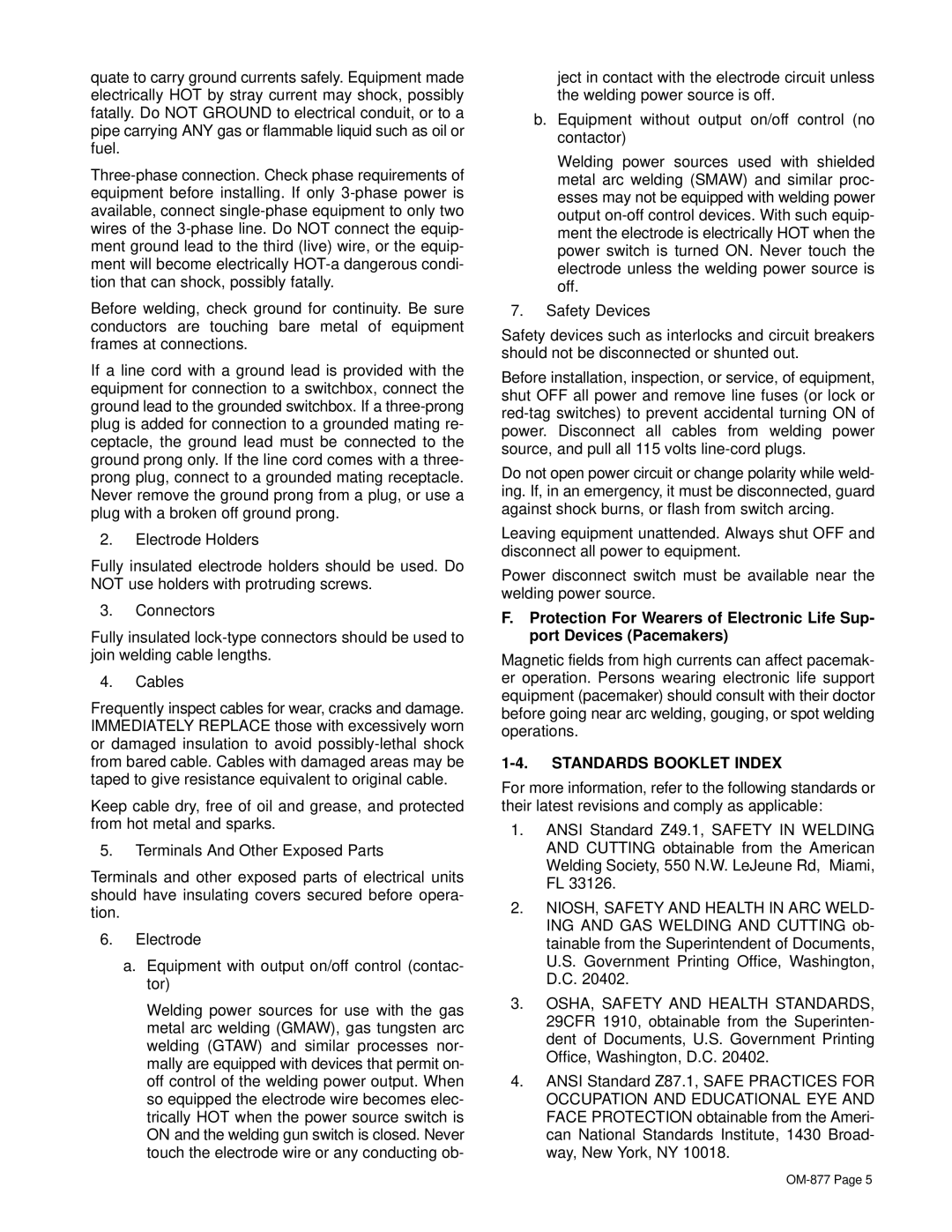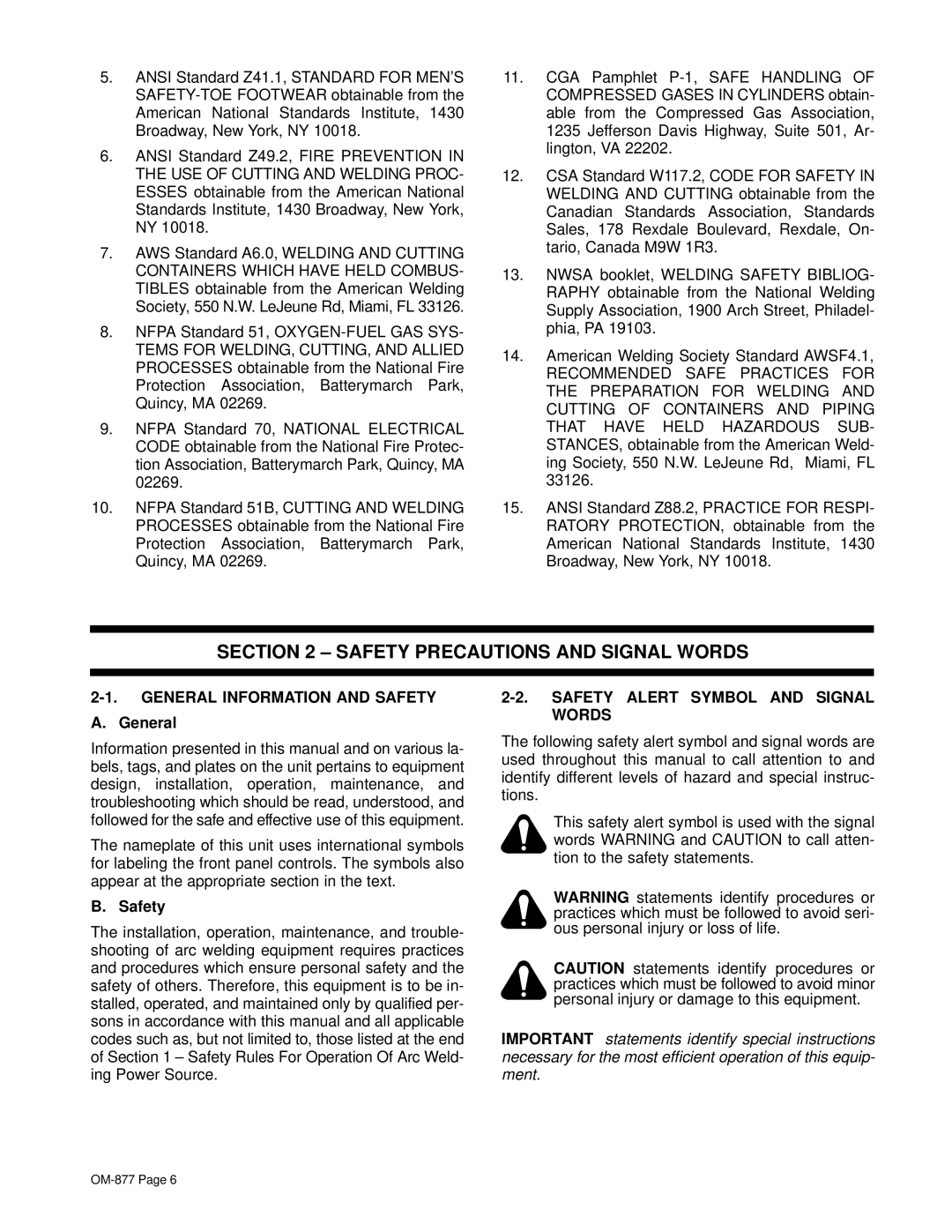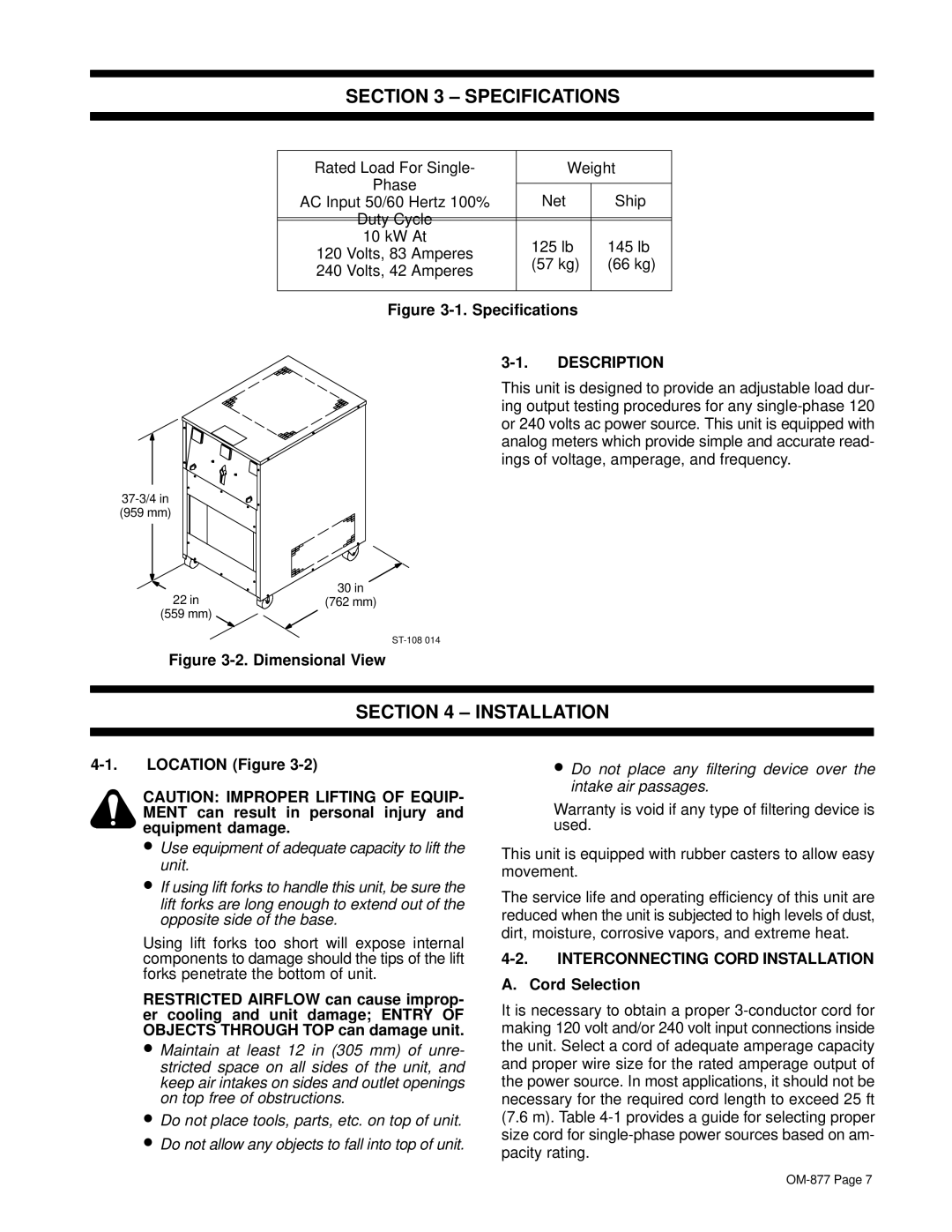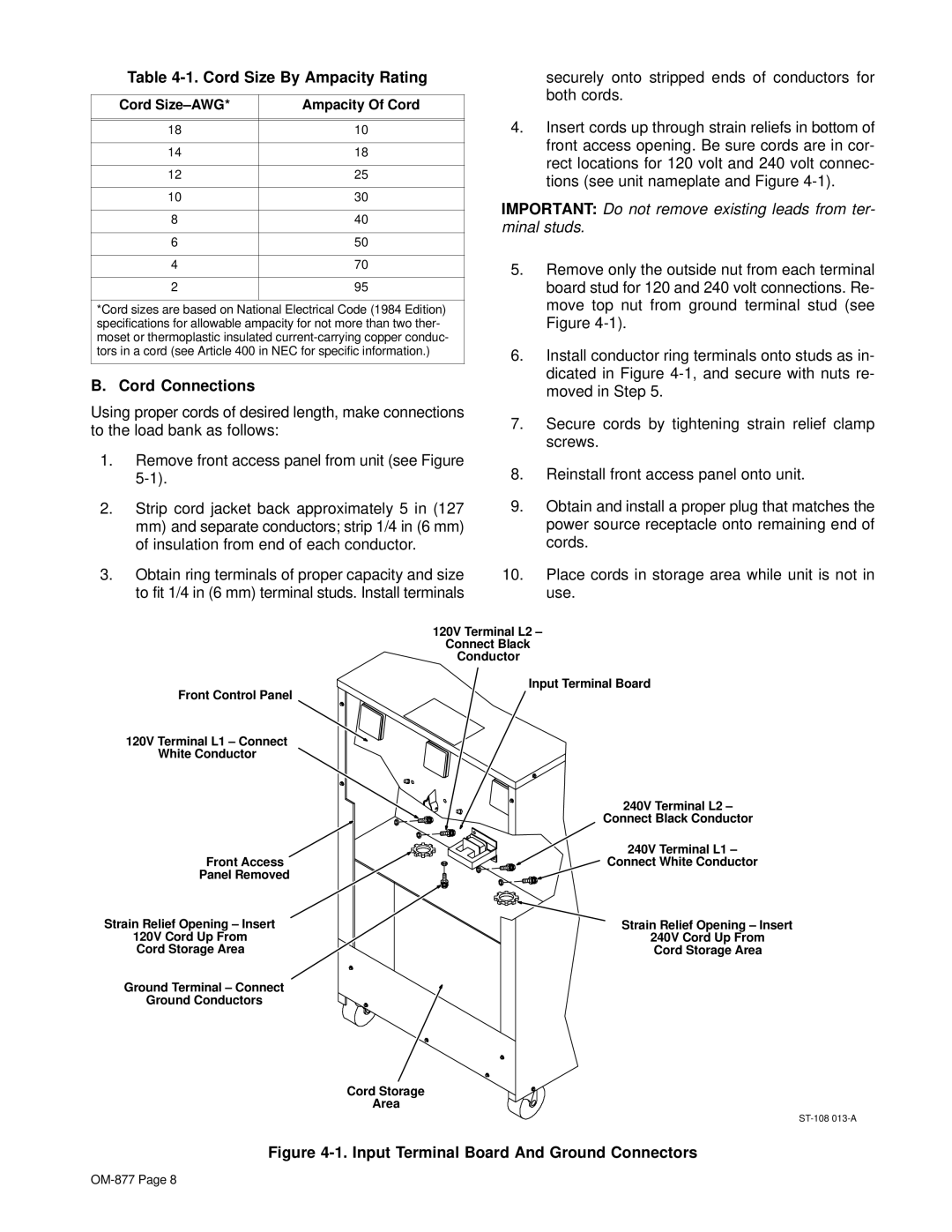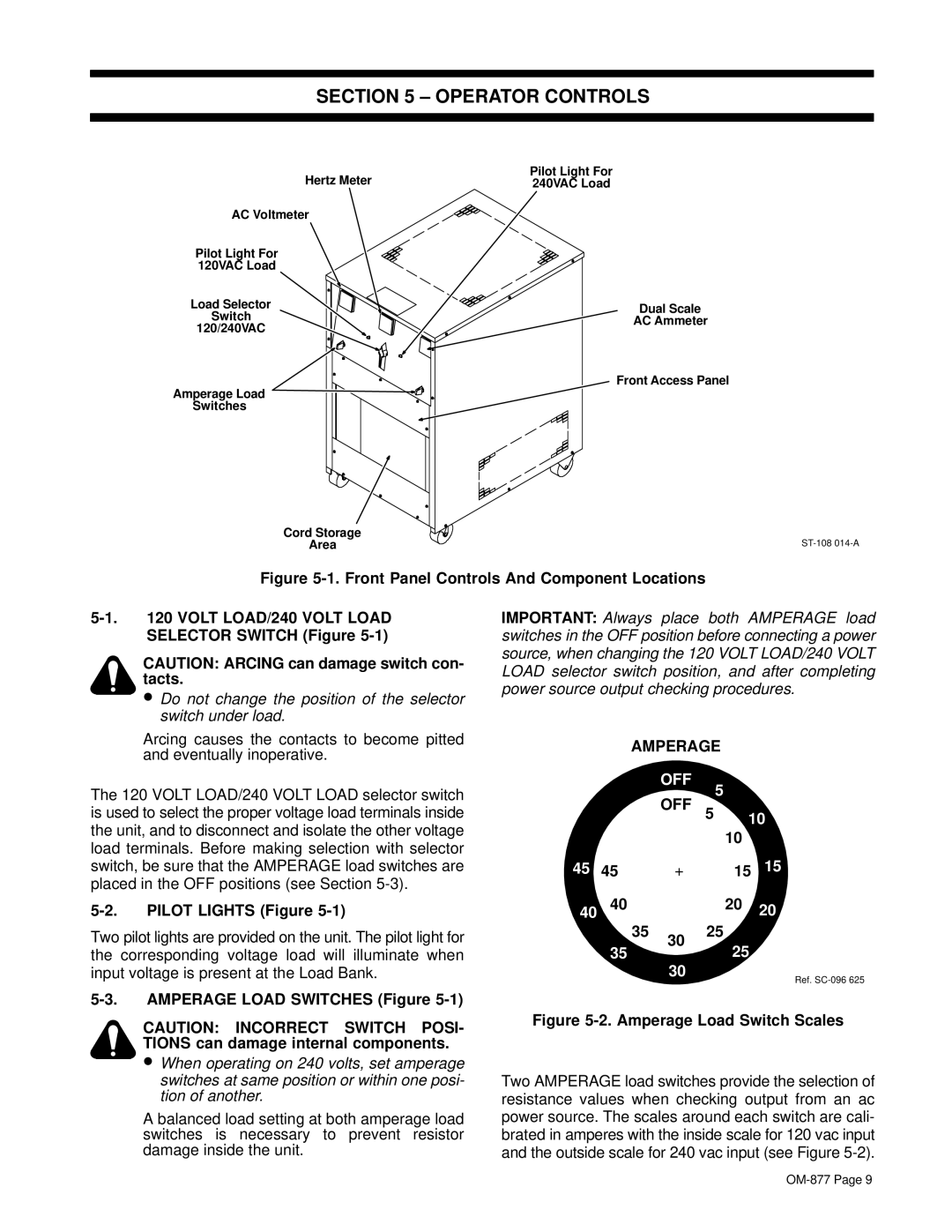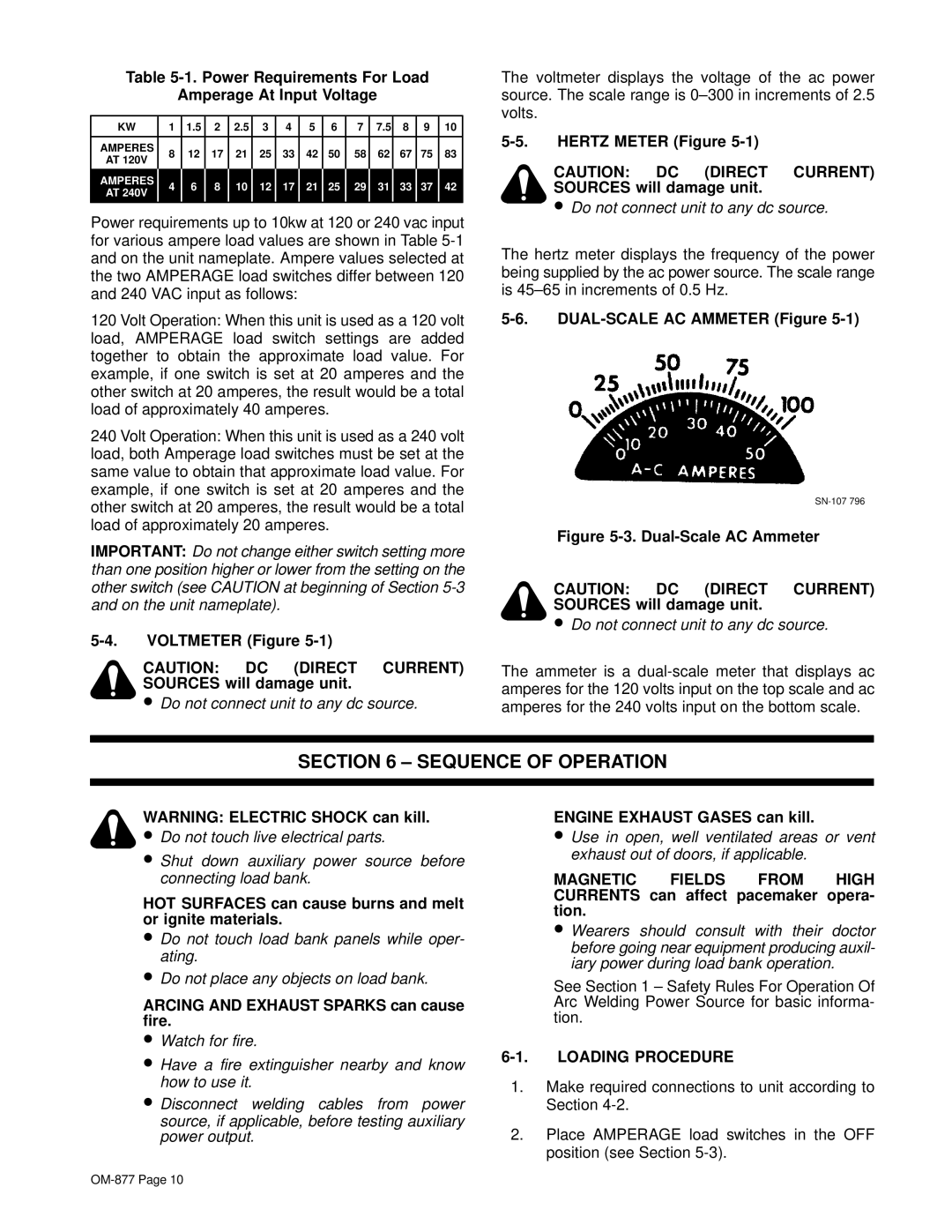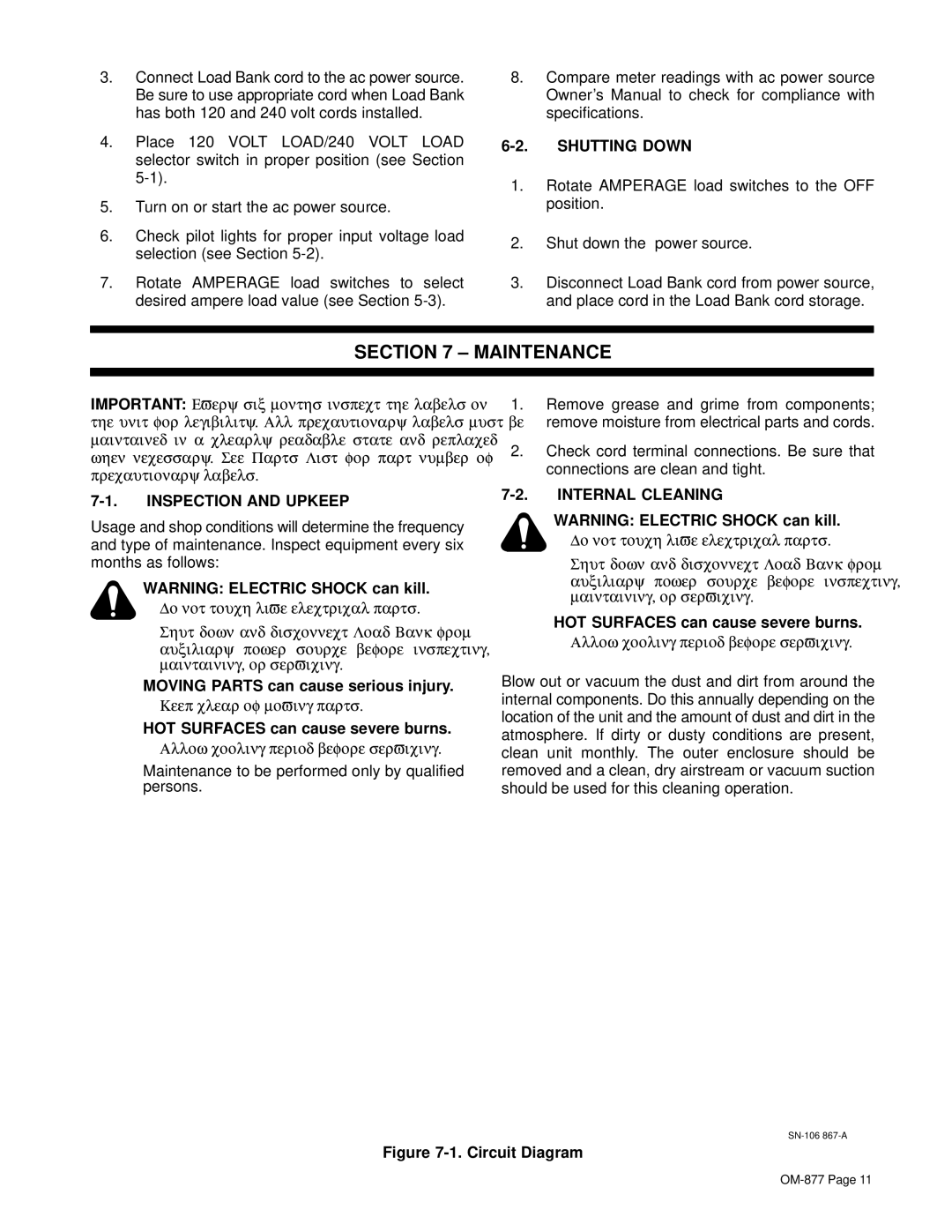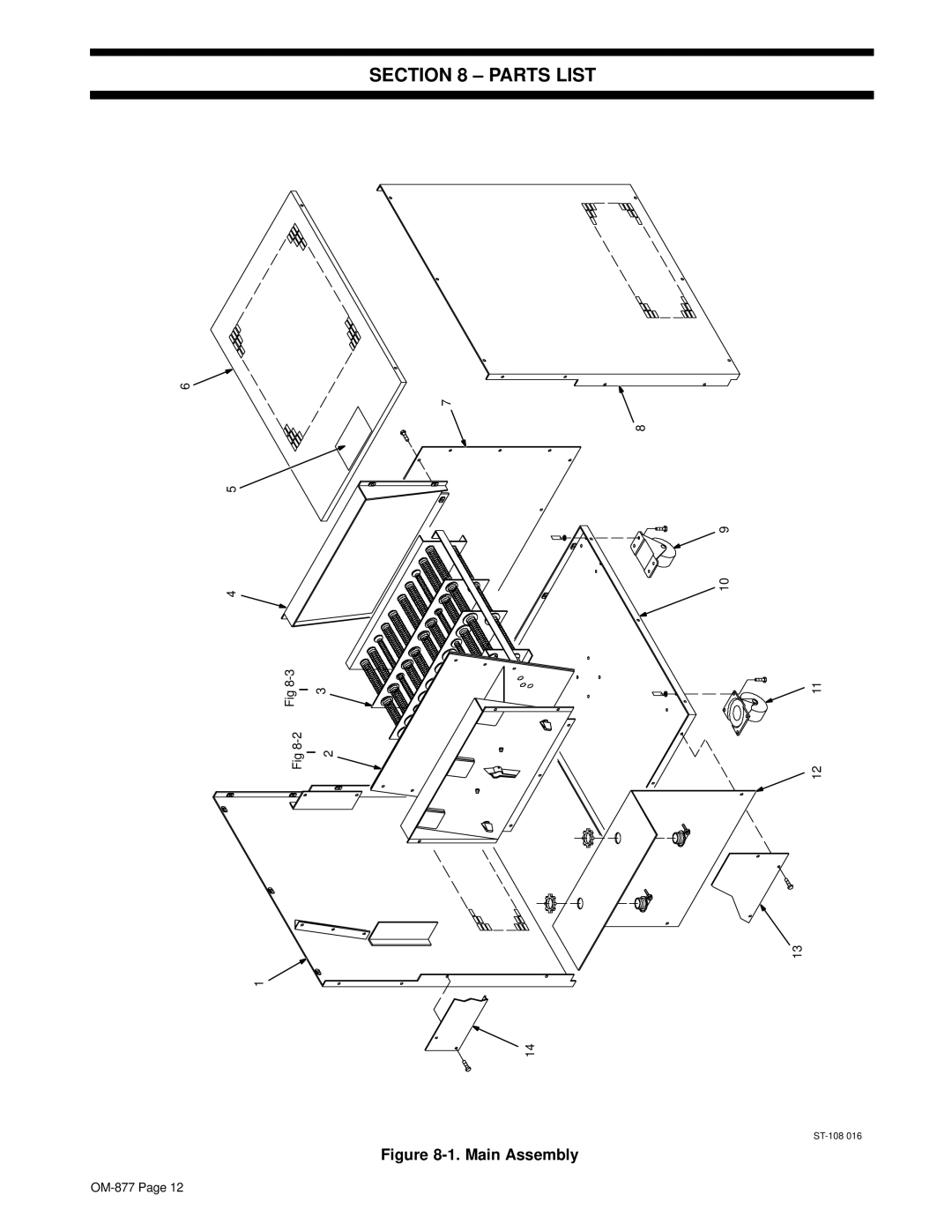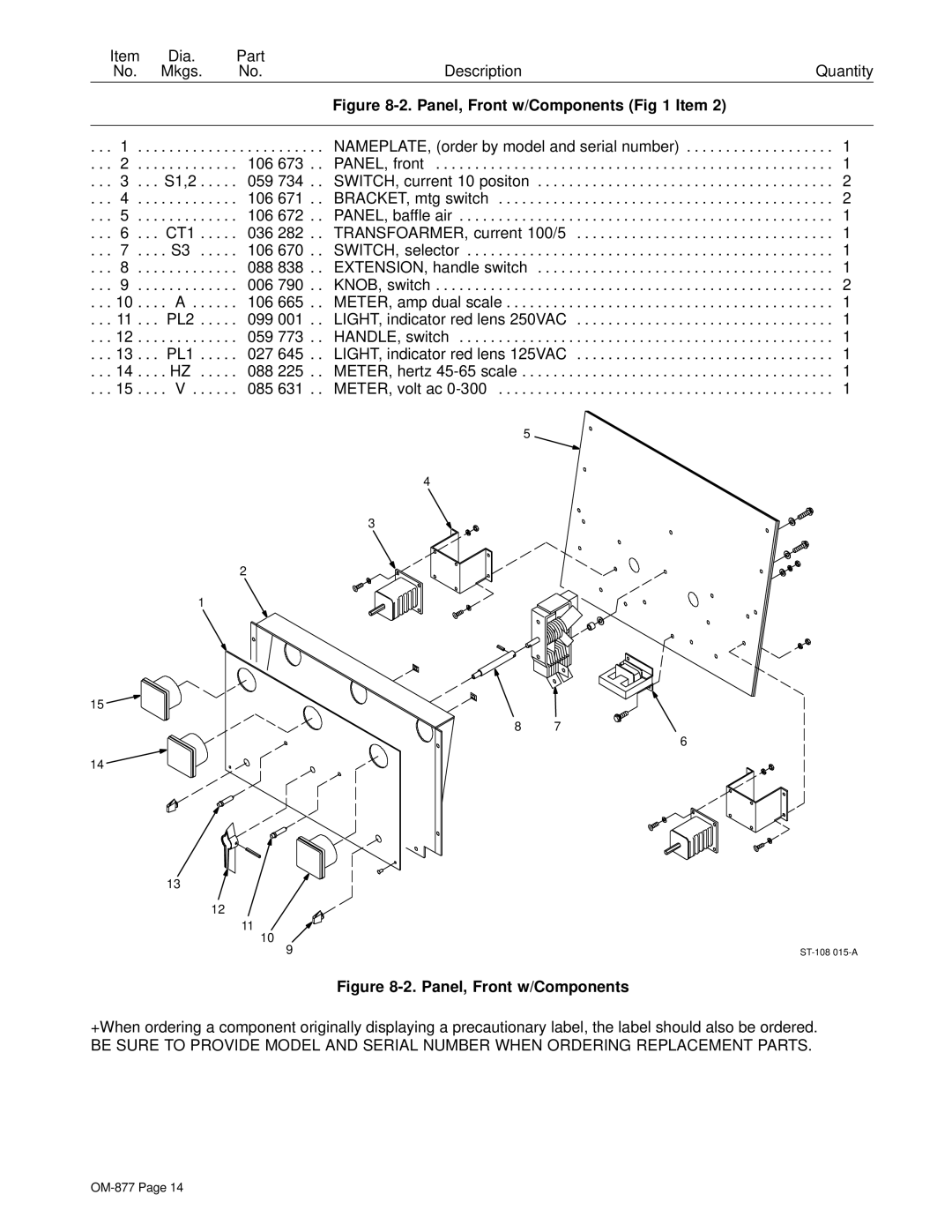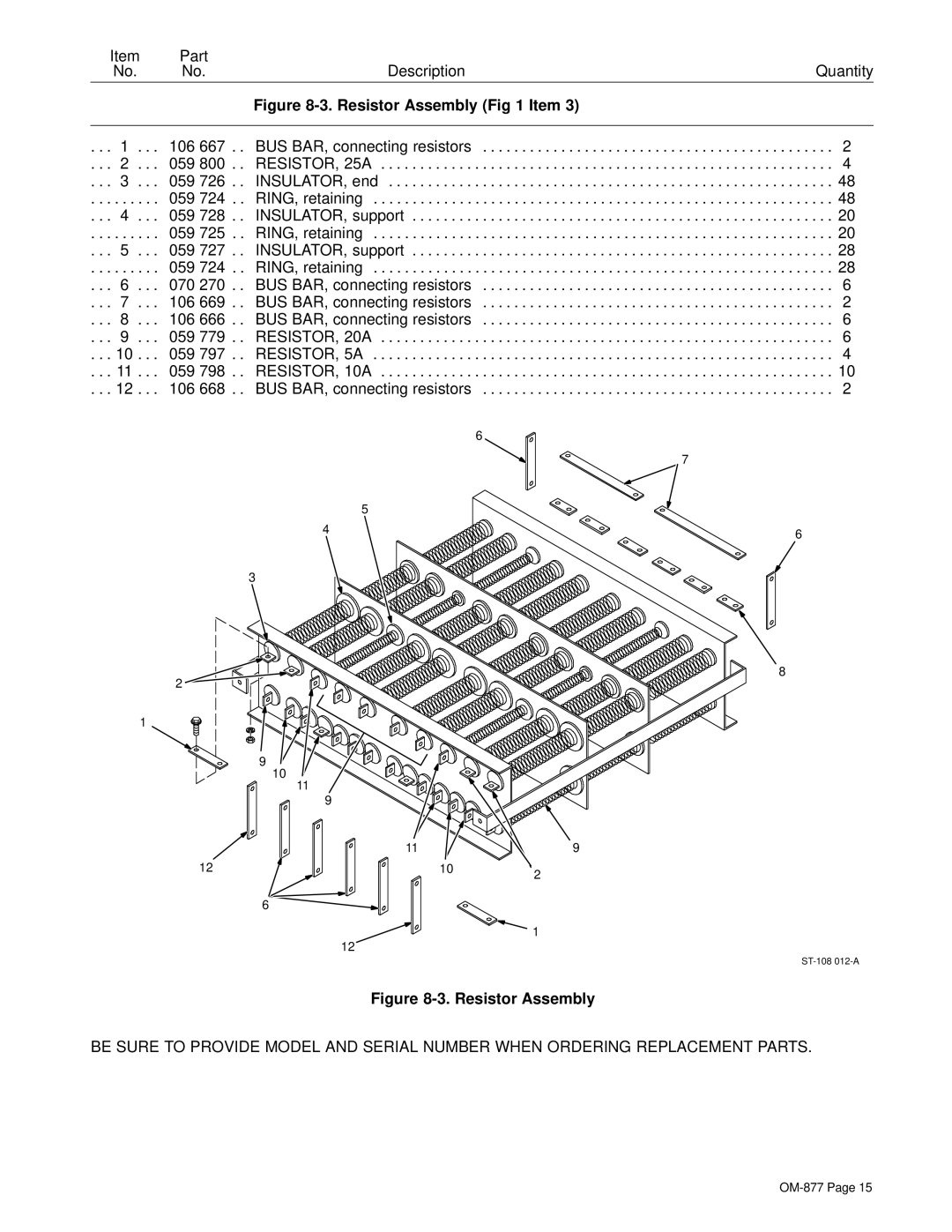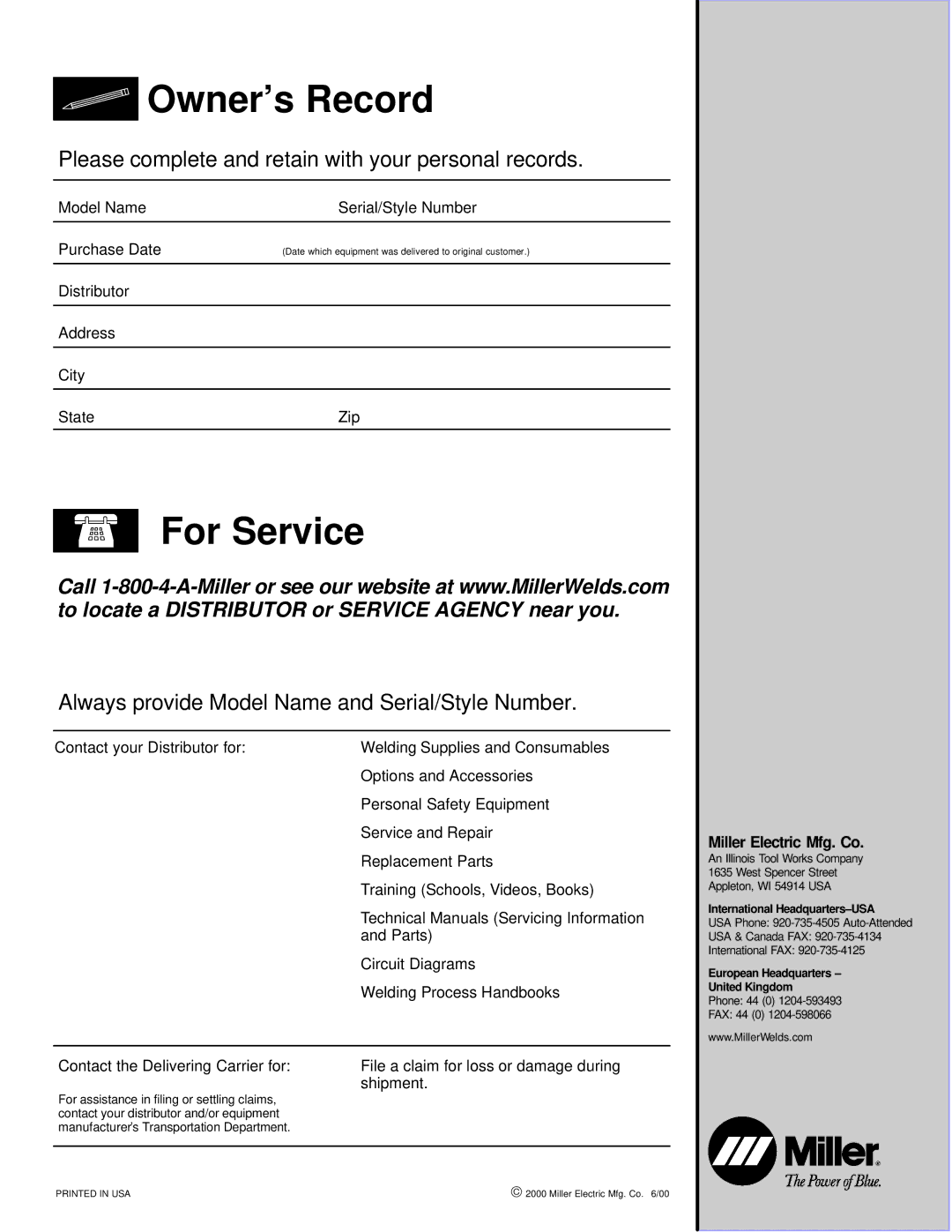SECTION 1 – SAFETY RULES FOR OPERATION OF ARC WELDING POWER SOURCE
1-1. INTRODUCTION
We learn by experience. Learning safety through per- sonal experience, like a child touching a hot stove is harmful, wasteful, and unwise. Let the experience of others teach you.
Safe practices developed from experience in the use of welding and cutting are described in this manual. Re- search, development, and field experience have evolved reliable equipment and safe installation, opera- tion, and servicing practices. Accidents occur when equipment is improperly used or maintained. The rea- son for the safe practices may not always be given. Some are based on common sense, others may require technical volumes to explain. It is wiser to follow the rules.
Read and understand these safe practices before at- tempting to install, operate, or service the equipment. Comply with these procedures as applicable to the par- ticular equipment used and their instruction manuals, for personal safety and for the safety of others.
Failure to observe these safe practices may cause seri- ous injury or death. When safety becomes a habit, the equipment can be used with confidence.
These safe practices are divided into two Sections:
Reference standards: Published Standards on safety are also available for additional and more complete pro- cedures than those given in this manual. They are listed in the Standards Index in this manual. ANSI Z49.1 is the most complete.
The National Electrical Code, Occupational Safety and Health Administration, local industrial codes, and local inspection requirements also provide a basis for equip- ment installation, use, and service.
1-2. GENERAL PRECAUTIONS
Different arc welding processes, electrode alloys, and fluxes can produce different fumes, gases, and radiation levels. In addition to the information in this manual, be sure to consult flux and electrode manufacturers Material Safety Data Sheets (MSDSs) for specific technical data and precaution- ary measures concerning their material.
A. Burn Prevention
Wear protective
Wear helmet with safety goggles and glasses with side shields underneath, appropriate filter lenses or plates (protected by clear cover glass). This is a MUST for welding or cutting, (and chipping) to protect the eyes
from radiant energy and flying metal. Replace cover glass when broken, pitted, or spattered. See
Avoid oily or greasy clothing. A spark may ignite them.
Hot metal such as electrode stubs and workpieces should never be handled without gloves.
Medical first aid and eye treatment. First aid facilities and a qualified first aid person should be available for each shift unless medical facilities are close by for im- mediate treatment of flash burns of the eyes and skin burns.
Ear plugs should be worn when working on overhead or in a confined space. A hard hat should be worn when others work overhead.
Flammable hair preparations should not be used by per- sons intending to weld or cut.
B. Toxic Fume Prevention
Severe discomfort, illness or death can result from fumes, vapors, heat, or oxygen enrichment or depletion that welding (or cutting) may produce. Prevent them with adequate ventilation as described in ANSI Stan- dard Z49.1 listed in Standards Index. NEVER ventilate with oxygen.
Lead
Metals coated with or containing materials that emit toxic fumes should not be heated unless coating is re- moved from the work surface, the area is well ventilated and, if necessary, while wearing an
Work in a confined space only while it is being ventilated and, if necessary, while wearing an
Gas leaks in a confined space should be avoided. Leaked gas in large quantities can change oxygen con- centration dangerously. Do not bring gas cylinders into a confined space.
Leaving confined space, shut OFF gas supply at source to prevent possible accumulation of gases in the space if downstream valves have been accidentally opened or left open. Check to be sure that the space is safe before
Vapors from chlorinated solvents can be decomposed by the heat of the arc (or flame) to form PHOSGENE, a highly toxic gas, and other lung and eye irritating prod- ucts. The ultraviolet (radiant) energy of the arc can also decompose trichloroethylene and perchloroethylene vapors to form phosgene. DO NOT WELD or cut where solvent vapors can be drawn into the welding or cutting
